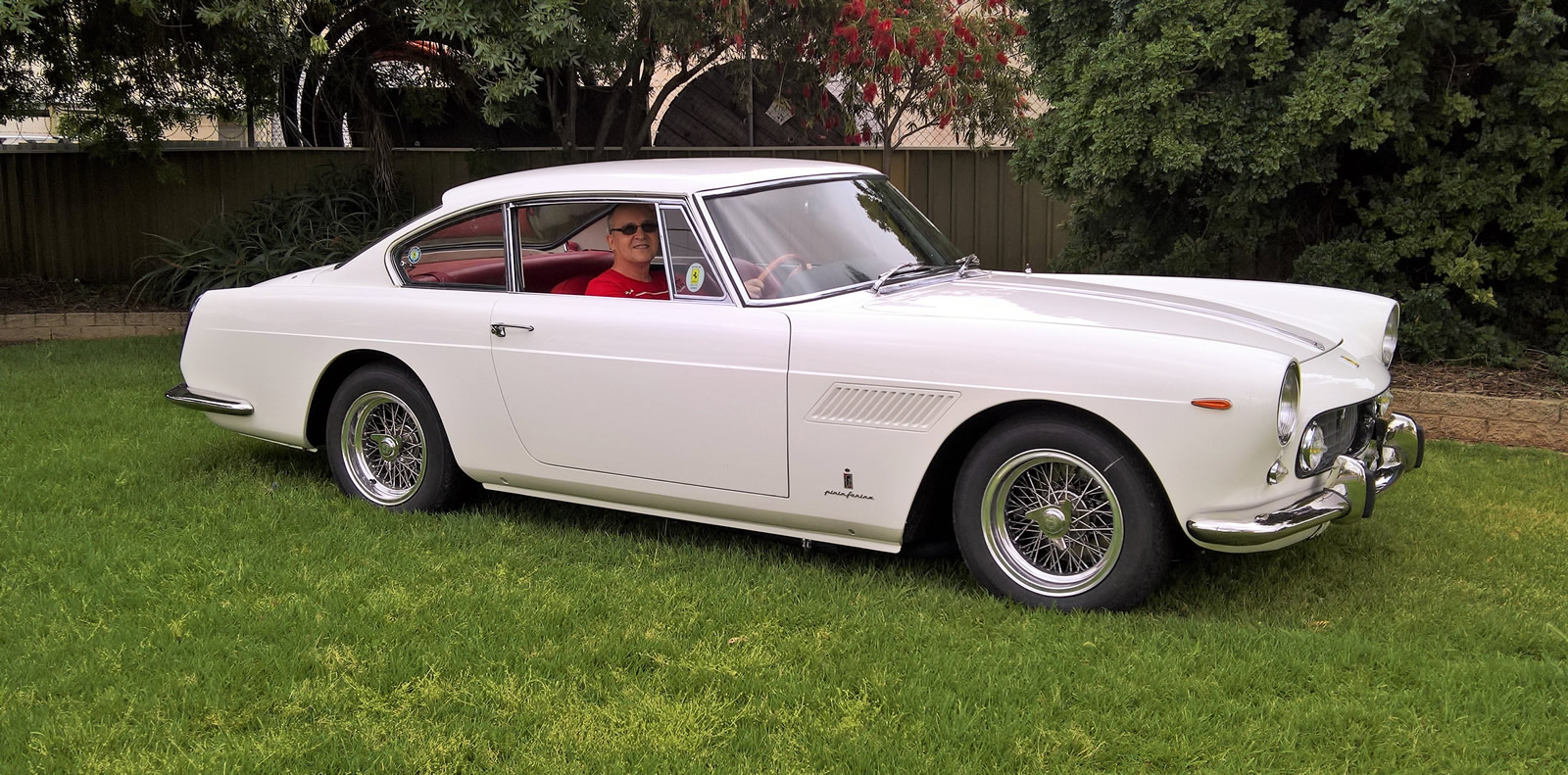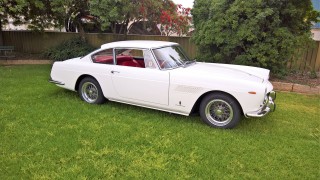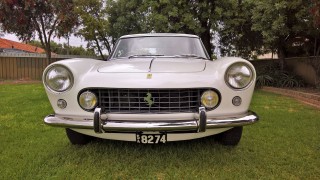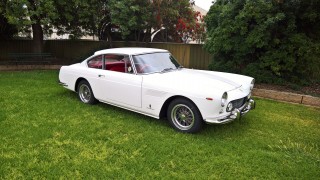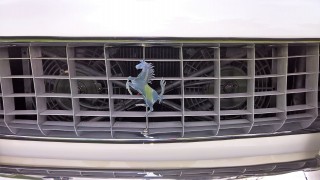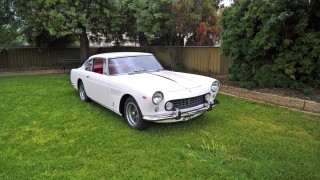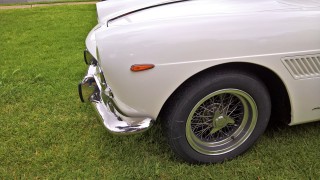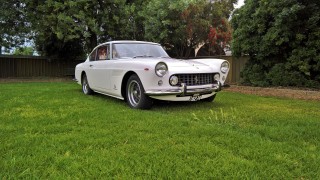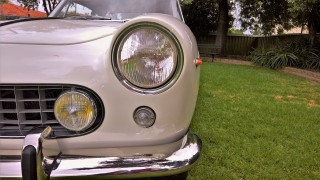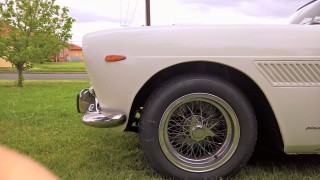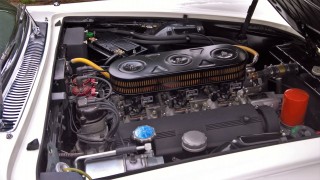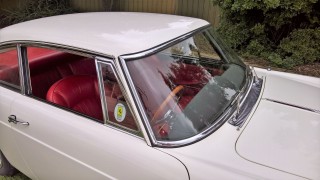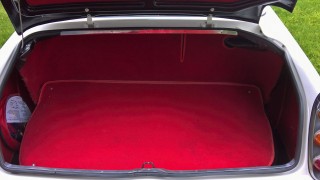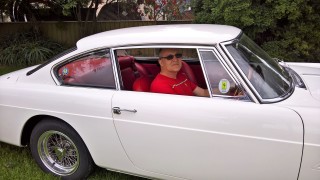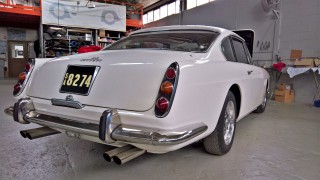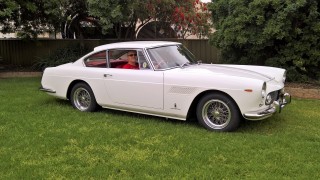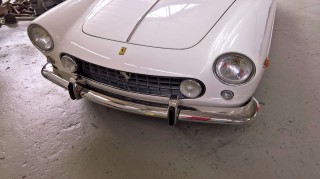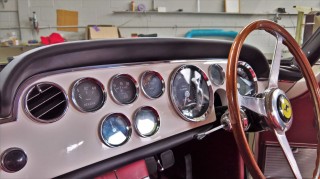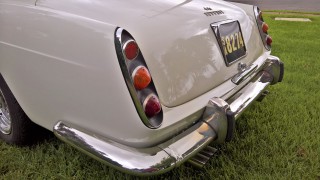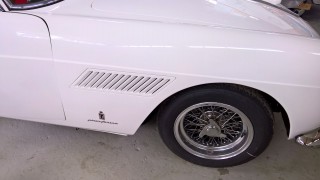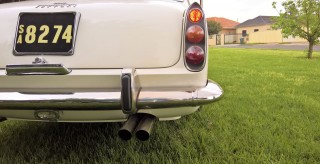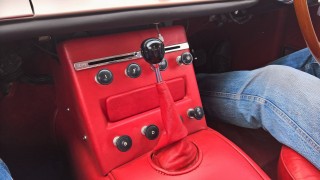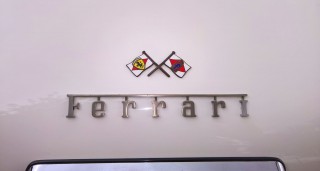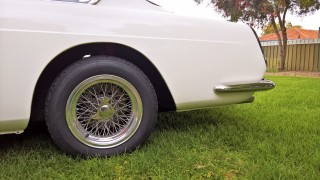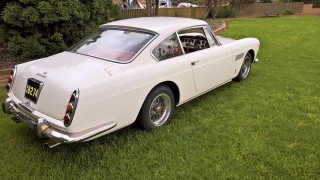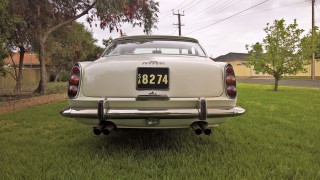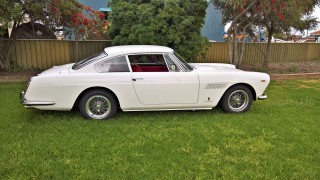Surreal, it's the only way I can describe the experience. Here I am riding along in the most expensive car I've sat in, and that's how it felt, surreal. To put it into perspective in OZ dollars if I sold my suburban Adelaide house to buy a Ferrari 250 GTE, I could maybe own a third of the car. UGH!
Besides ending up divorced if I mentioned the idea, I'd have to say if only a third of the GTE was on offer, it would have to be the front wings and what it contains, a glorious 3 litre Colombo V12 engine. Truly a work of art.Bodied by Pininfarina, the 250 GTE was essentially a 250 GT coupe, moving the 3.0-litre V12 engine 20
Its classic Colombo designed V12 was good for 240bhp, with a 0 to 100km/h sprint taking less than 8 seconds, it was quite the machine for its time. It's relatively lithe kerb weight of 1280kg accounted for its high performance, giving it a good power to weight ratio.
While all that sounds academic, what does that mean in real terms? What's it really like to drive, and why do early Ferrari's go for silly money?
By today's standards, a hot hatch will give it curry regarding straight line performance, but that doesn't paint an accurate picture of the cars outright ability, nor it's ability to seduce the driver, and boy does this car pull at the heartstrings. I challenge any petrol head not to fall in love with the 250 GTE once they've experienced it.
Everything about journeying in the 250 GTE is an occasion and involves theatre, sitting in the car warps you to a time of suave movie stars and cruising the Riviera south of France.
Take the start-up sequence; you can't just turn the key and away you go, no you have to prime the fuel system. You do this by twisting the ignition to the right; after that, a loud mechanical ticking/whirring enters the cabin and only after it stops can you start the engine by pushing the key. The resultant cacophony, once the V12 catches life is nothing short of breathtaking. You immediately question, all this noise and only three litres?
The next thing that confounds is the view out, today's manufacturers should take note, there's not a single blind spot from inside the cabin, vision everywhere is panoramic, the A and B pillars unbelievably thin, no side mirrors are required. The front wings of the car are entirely visible from the driver's seat, making placing the car a delight, the confidence it inspires is immediate.
The next thing that bamboozles, is the refinement. We begin our journey in the heart of the Adelaide suburbs in stop-start traffic; I'm expecting a recalcitrant beast, shouting Italian obscenities with its every motion. Instead, I'm treated to a car that is no more temperamental than a Ford Focus, never mind the clutch is a little heavy, it's more than acceptable. It's also quiet, even at our national speed limit of 110km/h, it's eerily devoid of the noise you might expect, there's just a hint of wind rustle around the A-pillar.
Now here's the thing, what about engine response, you're saying, it's 57 years old, surely it's nothing special. Seat of the pants driving tells another story, I think this thing would eat a Focus ST for breakfast. A lot of that could be down to the noise, and the feel of the torque kicking in when it's on song. The free-revving V12 has no trouble singing up to 7000rpm and what a sound it is. Ride compliance is also a standout; its ability to cope with our poor Australian road surfaces is superior to current GT tourers. The wire wheels, which are 15" Borrani's with Pirelli Cinturato high sidewall tyres no doubt help.
The 250 GTE was also one of the first series production Ferrari's fitted with all-wheels disc brakes by Girling, so it stops as well as it goes.
HISTORY & PROVENANCE
Delivered new by official Ferrari agents W.H. Lowe & Co of Box Hill, Victoria to Dr T.A. Maxwell who owned the car for a brief period before selling it to Mr Oliver Young of Adelaide.
Then purchased by Adelaide scientest Dr Garth Morgan. The car remained in his ownership for 35 years.
2008 sold to managing director Adelaide Bentleys Accounting firm Mr Nick Storer.
Current owner since 2014, former international racing driver and Le Mans winner Vern Schuppan AM.
Meticulously prepared and detailed by Gerard Miller's Marque Restoration firm in Adelaide, winner 2014 Motorclassica Best in Class, Best Restoration, Best in Show with the Vern Schuppan/Mal Hemmerling 1952 Aston Martin DB2. Acknowledged by prestigious classic car Octane Magazine as the best DB2 Aston Martin in the world.
This 1962 Ferrari 250 GTE still has its original seats, door trims and carpets.
